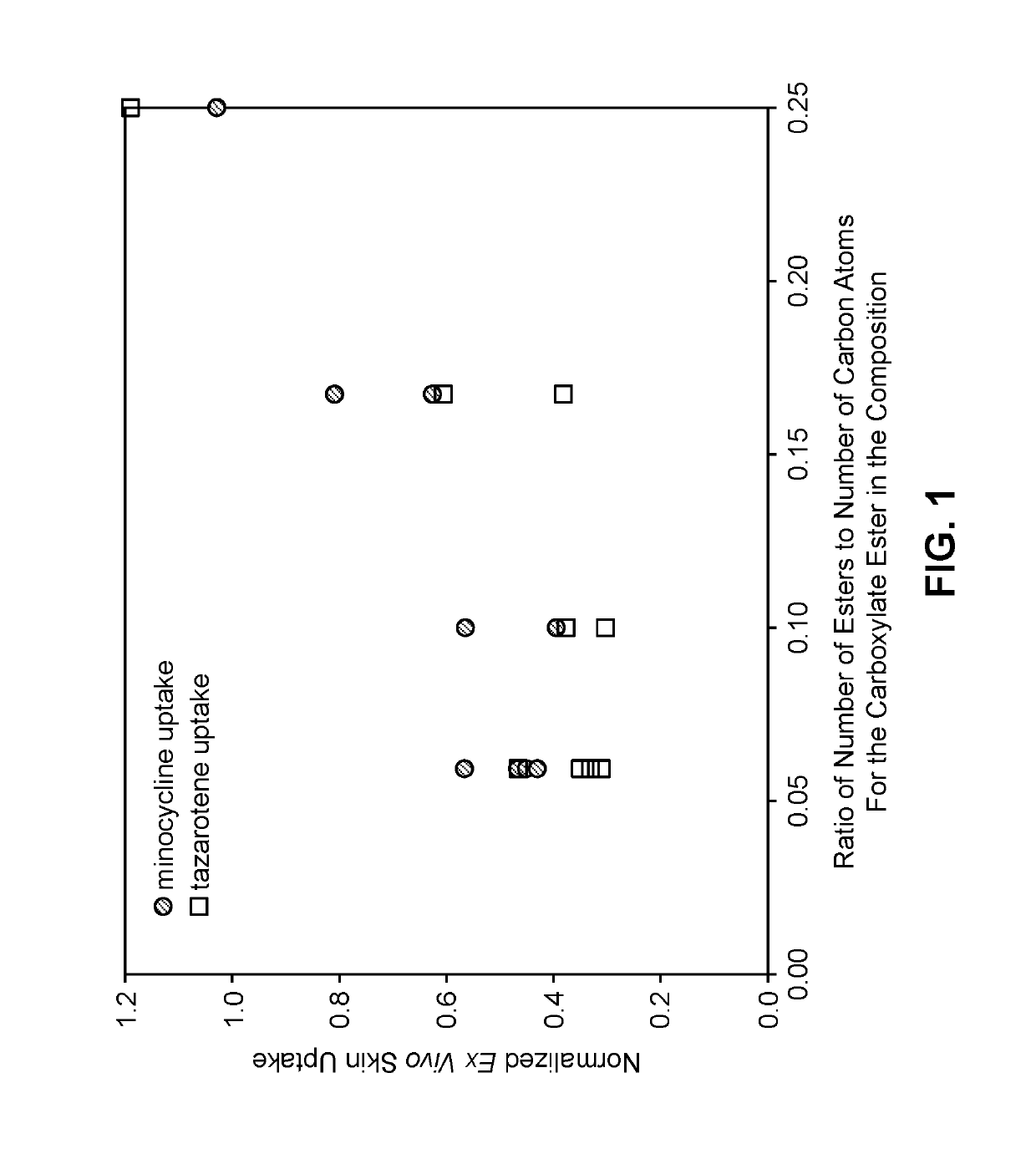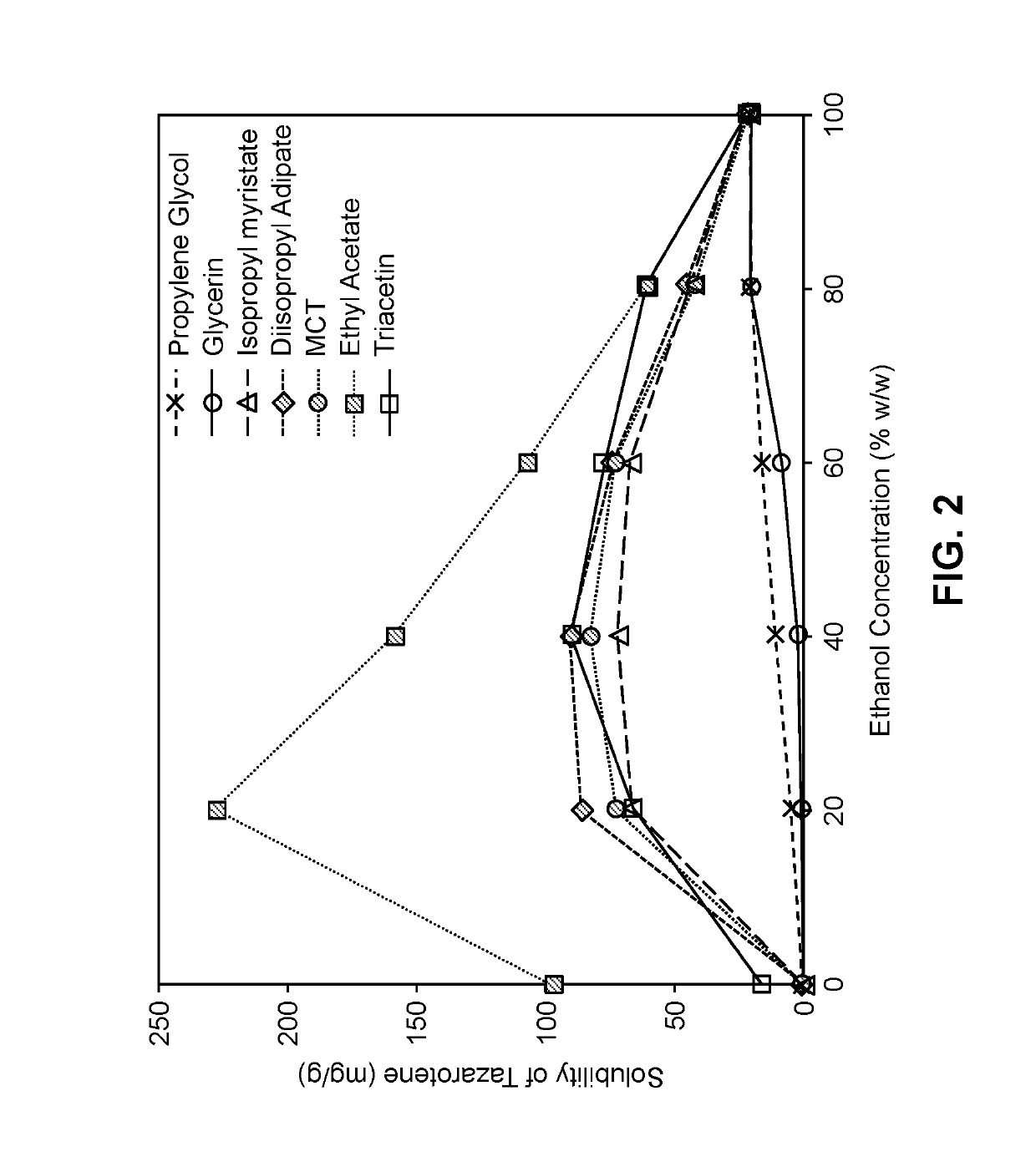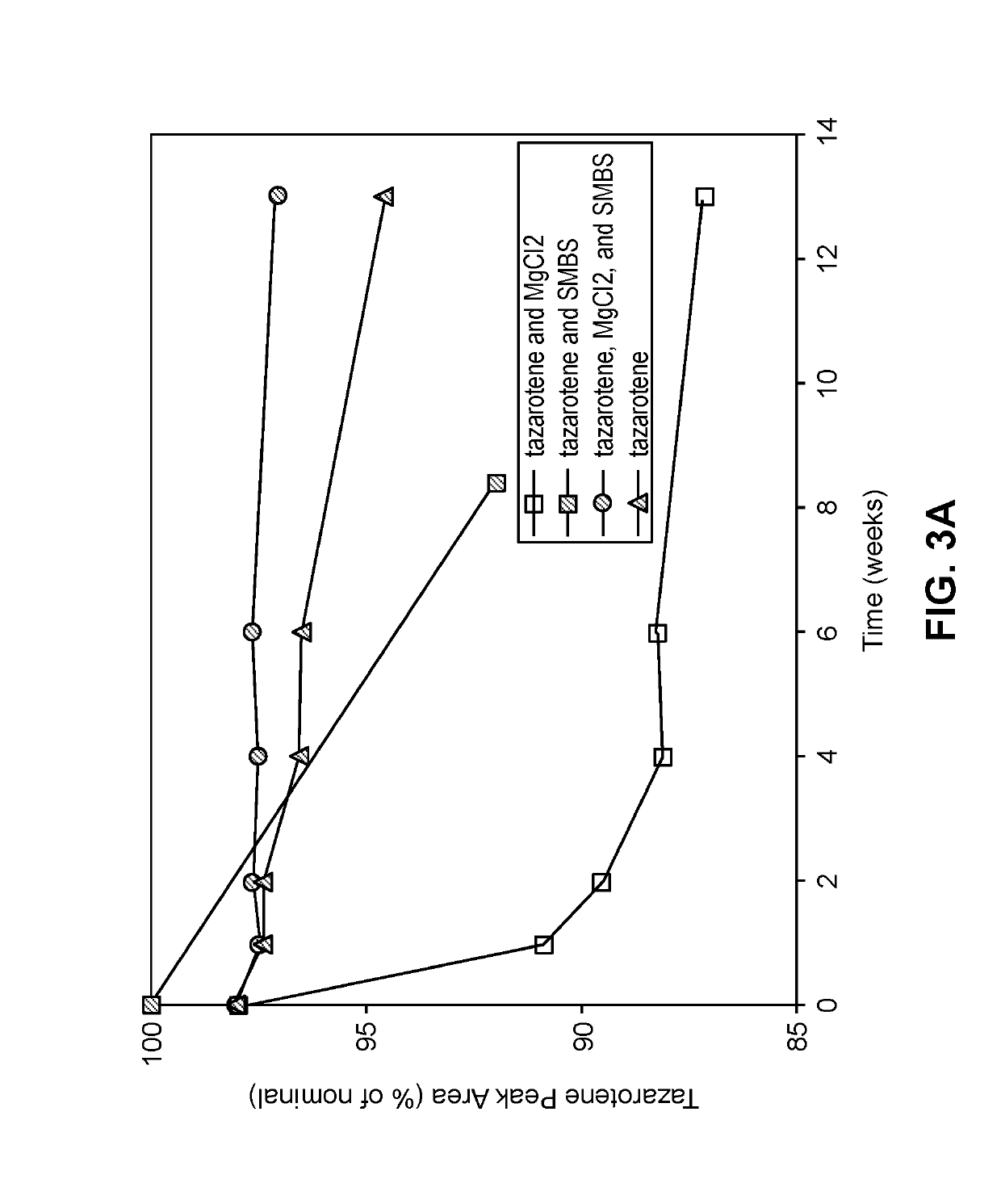Topical compositions with stable solubilized selective retinoids and/or tetracycline-class antibiotics
a selective retinoid and topical composition technology, applied in the direction of drug compositions, tetracycline active ingredients, inorganic non-active ingredients, etc., can solve the problems of clogging pores, retinoin does not have antibacterial properties, and retinoin increases the rate of skin cell turnover
- Summary
- Abstract
- Description
- Claims
- Application Information
AI Technical Summary
Benefits of technology
Problems solved by technology
Method used
Image
Examples
example 1
Tazarotene and Minocycline Penetration into Ex Vivo Human Skin
[0201]Penetration experiments with ex vivo human skin tissue were conducted to determine whether minocycline and tazarotene penetrate into the skin in sufficient concentrations to achieve a desired therapeutic effect when comprised within compositions that are applied to the skin surface and the composition comprises a monohydric aliphatic alcohol, a polyol, a carboxylate ester, a magnesium salt, and a sulfite. The penetration into facial skin was assessed for three different human donors with two samples from each donor for each data point.
[0202]Solvent mixtures were prepared in the proportions described in Table 2, with each solvent mixture comprising anhydrous ethanol (Spectrum Chemicals, Gardena, Calif.), propylene glycol (Spectrum Chemicals, Gardena, Calif.) or glycerol (Spectrum Chemicals, Gardena, Calif.), and a selected carboxylate ester. To each solvent mixture was added 1.2% (w / w) minocycline hydrochloride (Euti...
example 2
[0206]Tazarotene is known to have low solubility in many traditional solvent systems. The solubility of tazarotene in ethanol is relatively good at about 21 mg / g. However, compositions with ethanol as the only solvent are typically irritating to the skin, have a pungent smell, and leave the skin feeling dry. Aspects of the solvent system can be desirably improved by adding other solvents while maintaining sufficient solubility of tazarotene. It has been discovered that that mixtures of ethanol and carboxylate esters have higher solubility of tazarotene than would be expected from mixtures of the components individually.
[0207]As shown in Table 4, carboxylate esters alone do not demonstrate good solubility for tazarotene. Tazarotene is desirably used in compositions at a concentration of 0.01% to 0.20% (w / w). So, solubilites of at least about 0.1 to 2.0 mg / g are required to solubilize tazarotene. However, significantly higher solubilities are generally desirabl...
example 3a
Stability of Tazarotene in Exemplary Compositions
[0211]Retinoids can undergo chemical degradation in solutions due to oxidation. However, many antioxidants are not effective in sufficiently stabilizing retinoids in a pharmaceutical composition. A study was performed in which samples consisting of 0.05% (w / w) tazarotene dissolved in 79.15% (w / w) ethanol (anhydrous), 0.6% hydroxypropyl cellulose HF (KLUCEL HF), 20% propylene glycol, and 0.20% (w / w) of an antioxidant were stored in a sealed amber glass container for 8 weeks at 40° C. For the tested composition with no antioxidant, the additional 0.20% was made up with ethanol (anhydrous).
[0212]The resulting samples were assayed for tazarotene and the results are presented in Table 7. Only one of the antioxidants improved the stability of tazarotene: propyl gallete, reducing the degradation from 5% to 1% over the 8-week period. In contrast, the antioxidant ascorbic acid increased the degradation from 5% to approximately 50% over the 8-w...
PUM
 Login to View More
Login to View More Abstract
Description
Claims
Application Information
 Login to View More
Login to View More - R&D
- Intellectual Property
- Life Sciences
- Materials
- Tech Scout
- Unparalleled Data Quality
- Higher Quality Content
- 60% Fewer Hallucinations
Browse by: Latest US Patents, China's latest patents, Technical Efficacy Thesaurus, Application Domain, Technology Topic, Popular Technical Reports.
© 2025 PatSnap. All rights reserved.Legal|Privacy policy|Modern Slavery Act Transparency Statement|Sitemap|About US| Contact US: help@patsnap.com



